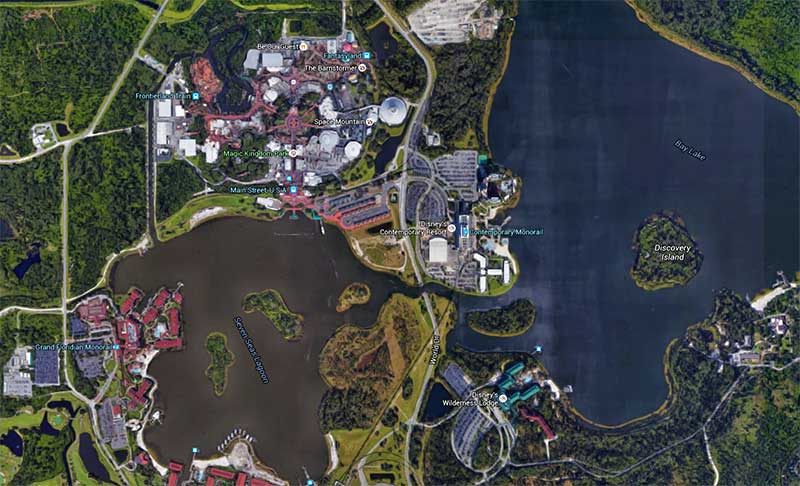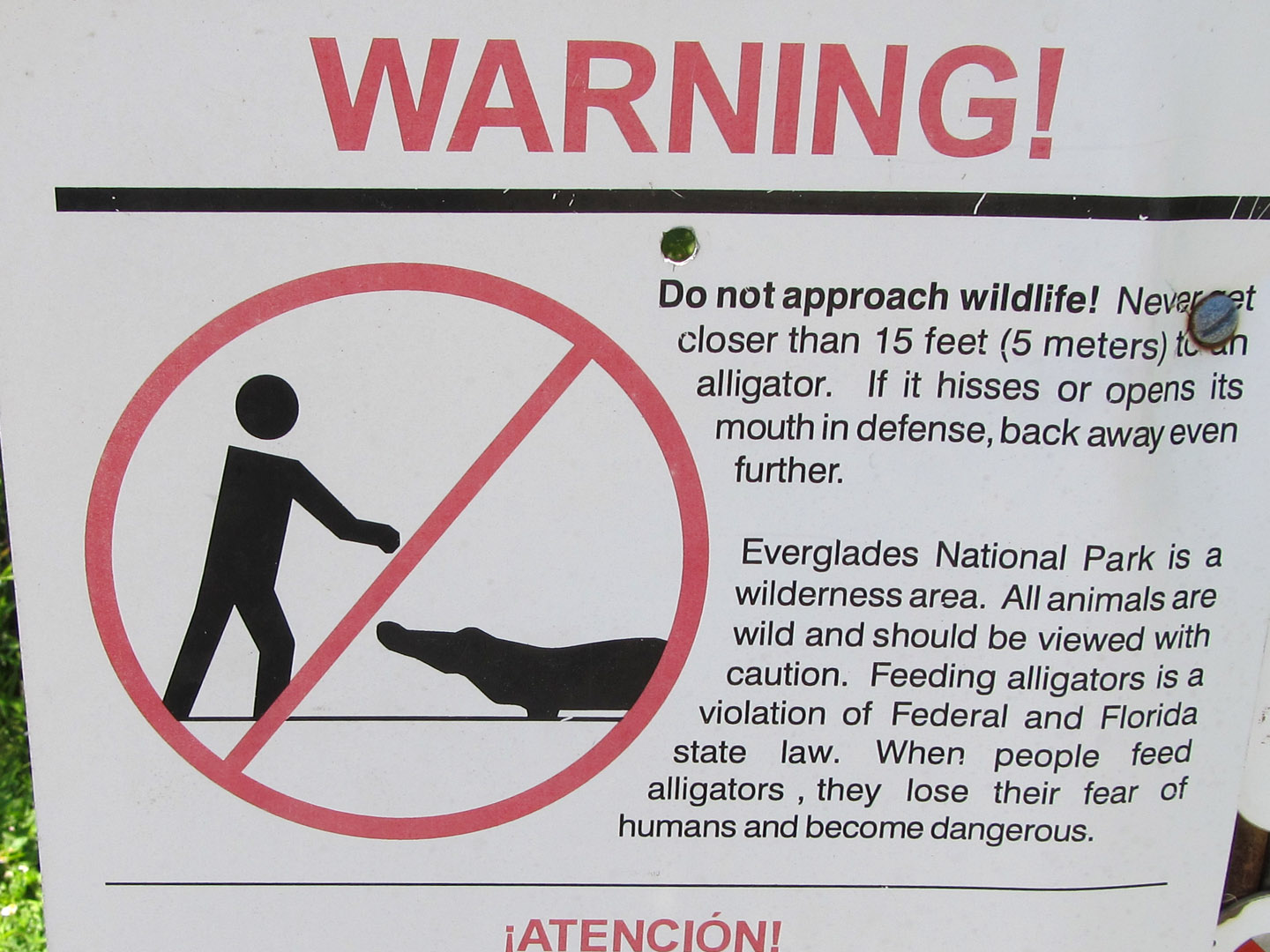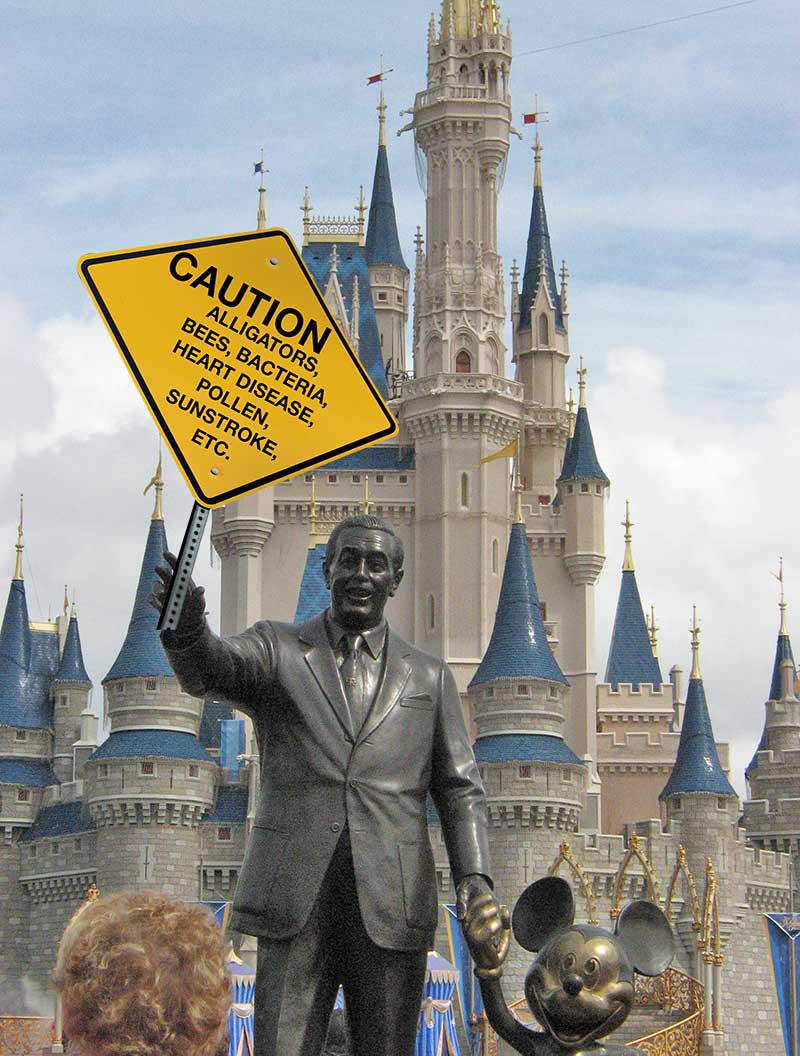Personal Tragedy or National News Fodder
On June 14th, 2016, tragedy struck a Nebraska family when their two year old son was attacked and killed by an alligator at Disney’s Grand Floridian Resort and Spa. Five days later and this event is still making national headline news.
As unadulteratedly heartbreaking as this is for the child’s family; as much as they will be scarred for the rest of their live; even allowing Disney’s place in popular culture and footie-pajama memories; this story does not warrant the national handwringing that has been blaring from our media for nearly a week.
News Flash: Alligator’s Live in Florida
Risk Assessment
Just another hunter like a wolf in the sun
Just another junkie on a scoring run
Just another victim of the things he has done
Just another day in the life of a loaded gunThe odds get even, you name the game
The odds get even, the stakes are the same
You bet your life~ Rush
According to the 2005 Scholastic Book of World Records, the majority of the world’s alligators inhabit Florida and Louisiana, with over a million alligators in each state. (Southern Florida is the only place where both alligators and crocodiles live side by side.) There are 1.3 million alligators across the state of Florida ‒ that’s one for every 15 people.
Disney World is built on wetlands – the natural habitat of gators and other Florida native reptiles. In fact, they built the park on a big mound of dirt from the earth that was scooped out to make the Seven Seas Lagoon. The entire property is interconnected via canals and is quintessential alligator habitat.
Disney World covers 43 square miles and hosts 50 million visitors a year. (And there are another 60,000 employees who work at the park.)
Nearly 90 percent of all alligator attacks in the U.S. happen in Florida. Florida averages about seven serious unprovoked bites a year, and officials put the odds of someone being seriously injured by an unprovoked alligator in Florida at roughly one in 2.4 million.
According to the Florida Fish and Wildlife Conservation Commission there have been 56 alligator attacks in the Sunshine State between 2010 and 2015, with only one fatality. The main reason is, small alligators make up the majority of the alligator population and don’t pose a threat to human beings.
And yet, for all of the alligators sharing the same space as mouse ear attired tourists, there have only been two significant attacks on humans since the parks inception. – And that is in spite of visitors propensity for feeding them and approaching them for photo opportunities.
Odds on Death
Compare those stats with these odds of death in America:
| Cause of death | Number of U.S. deaths | Rate of deaths |
|---|---|---|
| 1. Cardiovascular disease | 614,348 | 193 per 100,000 |
| 2. Cancer | 591,699 | 186 per 100,000 |
| 3. Chronic lower respiratory disease | 147,101 | 46 per 100,000 |
| 4. Accidents | 136,053 | 43 per 100,000 |
| 5. Strokes | 133,103 | 42 per 100,000 |
| 6. Alzheimer’s disease | 93,541 | 29 per 100,000 |
| 7. Diabetes | 76,488 | 24 per 100,000 |
| 8. Influenza and pneumonia | 55,227 | 17 per 100,000 |
| Drug overdoses | 47,055 | 15 per 100,000 |
| Kidney disease | 48,146 | 15 per 100,000 |
| Intentional self-harm | 42,773 | 13 per 100,000 |
| Septicemia | 38,940 | 12 per 100,000 |
| Liver disease | 38,170 | 12 per 100,000 |
| Transportation accidents | 37,195 | 12 per 100,000 |
| Parkinson’s disease | 26,150 | 8 per 100,000 |
| Firearm assault | 10,945 | 3 per 100,000 |
| HIV | 6,721 | 2 per 100,000 |
| Pedestrian deaths | 6,258 | 2 per 100,000 |
But even if we sift the data to eliminate many of these causes of death (which are often the result of broader lifestyle and hereditary causes) and we go the the extreme – death’s caused by animals, this is what we see:
Average annual animal caused fatalities in the US, 2001-2013
- Alligators, sharks and bears each kill an average of one person per year.
- Venomous snakes and lizards kill six per year
- Spiders kill seven
- Cows take out twenty people per year on average
- Dogs – man’s best friend – takes out twenty-eight people
- Bees, wasps and hornets kill fifty-eight
Caution: Signs Up Ahead
In spite of these facts and the incredibly low odds of getting hurt, let alone killed by an alligator, this event has led to some criticize Disney for not having proper signage.
Although Disney did in fact, have signs meant to discourage swimming, I think it is fair to say that given the beach like property, wading into the water was not an unreasonable thing to do and so the family can’t be blamed for being reckless.
But because the family and unfortunate child weren’t careless, that doesn’t mean that Disney is culpable for the actions of all indigenous animals on its property.
But still we’re told: signs would have made a difference, even though it would take quite a sign to list the causes of death at Disney World. If not signs: perhaps fences around all water. If not fences, walls…
A number of years ago, I did a bike tour of the Everglades National Park. Mammoth alligators would often sun themselves on the bike trail. One either rode around them (our option), or turned back. Seeing these great animals was a fantastic experience.
My friends and I talked to a park ranger about the gators and tourist reactions. We were told stories about tourists who would lay down next to 10 foot long alligators so that they could get their photo taken by their family. One tourist had even climbed on the back of an alligator for a photo opp, all in spite of the numerous signs to be found warning people not to approach alligators.
If signs weren’t good enough to keep people from approaching the actual alligators themselves, how effective is a sign going to be to keep people from simply wading into water?
We react to untimely, visceral death more emotionally than the everyday variety, even if we’re far more likely to give up the ghost from a car accident than an attack from a reptile. We may die in our lazy boy recliner at the age of 90 or we may be a bear’s breakfast when we’re 16 years old. But in the end, given enough time, life is 100% fatal and there aren’t enough signs in the world to keep nature at bay.
For my part: if I ever get taken out by a wild animal, either by my own stupidity or by the chances of life: please don’t post any signs or erect any guardrails in my name.
On the other hand, I would take a nice trail name. Perhaps something like, “Glen Green Grisly Grizzly Memorial Scenic Sunset Trail“.
Sign, sign, everywhere a sign
Blockin’ out the scenery, breakin’ my mind
Do this, don’t do that, can’t you read the sign?~Five Man Electrical Band





Recent Comments